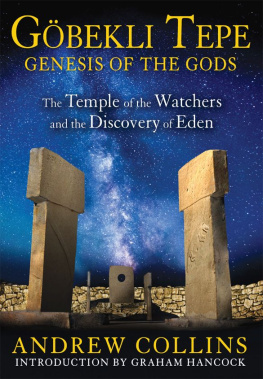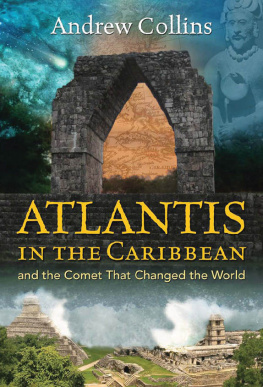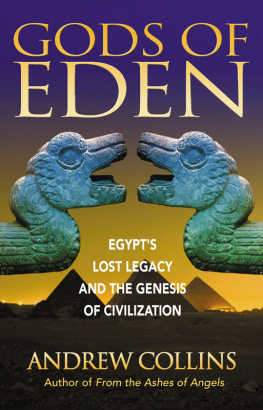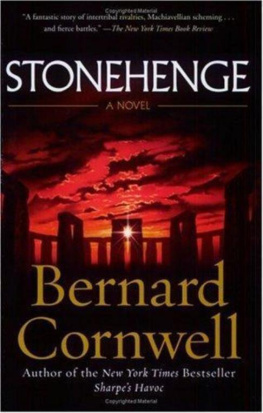Table of Contents

To Those Who Struggle for Freedom,
In the Garden of Eden,
Past and Present
And to the memory of
Filip Coppens
(19712012)
and
Colin Wilson
(19312013)
Friends and Genuine Seekers of the Truth
ACKNOWLEDGMENTS
First, I would like to thank those who have been involved in providing visionary thoughts and information that helped inspire the creation of this current work. They include Richard Ward, David Southwell, Debbie Cartwright, Bernard G., Graham Phillips, and Catja de Lorenzo. I would also like to express my gratitude to Rodney and Joan Hale, for their indelible help in making sure my life continues; Storm Constantine and Jim Hibbert, for putting up with me in their home for over a month; Graham Hancock and Santha Faiia, for the wonderful introduction, and their precious time and help; and Greg and Lora Little, for their constant friendship and support.
In addition to this, I would like to thank Jonathan Bright, for his exchanges on the Greek language; Alberto Forgione, for the cover illustration; Idris Gurkin, for his friendship and kind help as a translator and guide in Turkey; Glzar and Hdr elik, for their hospitality in Paradise; Catherine Hale, for her line editing and suggestions; Barbara Hand Clow, for the use of her brilliant term catastrophobia; J. L. Katzman of Aggsbachs Paleolithic Blog, for permission to use pictures; Suna Kse, for her invaluable help in finding me local contacts in eastern Turkey; Janet Morris, for her archive research into the more obscure topics under discussion here; Raffi Kojian, of the AniOnline forum, Gagik Avagyan, and Sunny Keshishian Ross, for their Armenian language translations and advice; Russell M. Hossain, for his wonderful 3-D sculpts; Professor Klaus Schmidt, for agreeing to answer my questions and permitting me to explore Gbekli Tepe; Dr. Harald Hauptmann, for his help regarding the excavations at Neval ori; and Michael Tazzar, for his research discussions.
I would also like to extend a big thank-you to all the others who have helped me during the writing of this book, including Eileen Buchanan, Yvan Cartwright, Adam Crowl, Hakan Dalkus, Amadeus Diamond, Kelly Delaney Stacy, Adriano Forgione, Dawn Forgione, Stephen Gawtry, Richard D. Kingston, Peter Knight, Ian Lawton, Yuri Leitch, Chris Nemmo, Hugh Newman, Chris Ogilvie Herald, Khanna Omarkhali, Graham Phillips, Nigel Skinner-Simpson, Alby Stone, Geoff Stray, Alan Todd, Paul Weston and Rachel Blake, Leon and Lisa Flower, Pino Morelli and Roberta Formoso, Matt Kyd and Renny Djunaedi, Brent and Joan Raynes, Mark and Michelle Rosney, Buster and Abigail Todd, Bob Trubshaw and Judi Holliday, Caroline Wise and Michael Staley, Philippe and Domenique Ullens, John Wilding and Esther Smith, and staff at the Henge Shop, Avebury. Finally, I want to say a massive thank you to Olatundji Akpo-Sani, Kelly Bowen, Kevin Dougherty, Jon Graham, John Hays, Erica B. Robinson, Peri Swan, Jessie Wimett, Chanc VanWinkle Orzell and all the team at Inner Traditions/Bear & Company for being so patient with me over the past couple of years. It is very much appreciated.
CONTENTS
NOTE ON DATING SYSTEM USED
The long-held dating system of BC (before Christ) and AD ( anno Domini, in the year of the Lord) is used in preference to more modern forms, such as BCE (before the common era) and CE (of the common era). Occasionally BP (before the present) and KYA (thousand years ago) are used when expressing events of the past. All dates provided by the process of radiocarbon dating are recalibrated unless otherwise stated.
ILLUSTRATION CREDITS
Figure credits
Harald Hauptmann/Deutsches Archologisches Institut, 1.2, 1.3, 1.4, 2.2
Catherine Hale/Rodney Hale/Andrew Collins, 1.1
Rodney Hale/Andrew Collins, 1.5, 2.1, 3.1, 3.2, 6.3, 7.1, 7.3, 8.1 and 8.1, 8.2, 9.4, 9.5, 10.4, 10.5, 13.1, 19.1, 21.3, 22.1, 23.1, 27.1, 27.2, 27.3, 28.1, 28.2, 33.3, 36.1, 39.2
Michelle Rosney, 2.2
Storm Constantine, 4.2, 9.3
Yuri Leitch, 6.1
Robert Braidwood/Halet ambel/Univ. of Istanbul/Univ. of Chicago, 7.2
Greg Little, 8.3
Billie Walker John, 9.1, 32.1, 37.3
Gaziantep Archaeological Museum, 10.2
J. L Katzman/www.aggsbach.de, 52B
Deutsche Archologisches Institut, 52A & 52C
Russell M. Hossain, 26.1, 32.1
Google Earth/DigitalGlobe 2013, 39.1
All other illustrations are from the authors collection and are thus copyright the author of this work.
Color Plate Credits
Caroline Wise/Rodney Hale,
J. L Katzman/
Rodney Hale,
All other plates are copyright the author.
INTRODUCTION
By Graham Hancock
T he new millennium promised muchthe rising of Atlantis, the Second Coming of Christ, and the discovery of the Hall of Records in Egypt. Yet those of a New Age persuasion who had waited patiently for this all-important date were to be sadly disappointed. Even so, an archaeological discovery brought to the worlds attention for the first time in 2000 is now poised to make up for any sense of anticlimax that might have accompanied the millennial nonevent.
I speak of Gbekli Tepe, a megalithic complex of incredible beauty and importance located close to the ancient city of anlurfa in southeast Turkey. Here, quietly, since 1995, a series of stone enclosures of immense sophistication, each containing T-shaped pillars up to 18 feet (5.5 meters) tall and weighing as much as 16.5 US tons (15 metric tonnes), is being uncovered on a mountain platform close to the western termination of the Anti-Taurus range.
Carved into the faces of the dozens of stone pillars and freestanding monoliths uncovered so far is a virtual menagerie of strange creatures that populated the world when these mysterious monuments were constructed between twelve thousand and ten thousand years ago. Foxes, wolves, lions, snakes, aurochs, hyena, ibex, and boars are seen alongside insects, arachnids, and various species of bird, including crane, vulture, flamingo, and a flightless bird with the likeness of a dodo.
The quality and style of Gbekli Tepes strange carved art are at once breathtaking and mesmeric, a fact made even more incredible in the knowledge that we are told the complex was built by simple hunter-gatherer communities that thrived in an age before the emergence of subsistence agriculture and animal husbandry.
NEOLITHIC REVOLUTION
Professor Klaus Schmidt, the forward-thinking German archaeologist in charge of excavations at Gbekli Tepe, now believes that the Neolithic revolution came about as a result of the creation of megalithic complexes of this kind across southeast Turkey, which forms part of what archaeologists refer to as the triangle dor, or golden triangle. Schmidt proposes that the many hundreds of people involved in the construction and maintenance of the enclosures at Gbekli Tepe would quickly have depleted locally available food resources.
Add to this the thousands of pilgrims who would descend on the site for clan gatherings and other forms of ceremonial activity, and it is clear that another, more plentiful supply of food was requiredone that could be provided year in year out, ad infinitum. Hence, subsistence agriculture rapidly emerged in the form of the domestication of wild species of wheat and rye. This required the hunter-gatherers of the region to become settled farmers and pastoralists living in more permanent environments, which gradually emerged as the first towns and villages of the Neolithic age.
Evidence of this transition from hunter-gatherer to settled farmer in southeast Turkey comes from the discovery by geneticists that sixty-eight modern strains of wheat derive from a form of wild wheat called einkorn that thrives to this day on the slopes of an extinct volcano named Karaca Da, which lies some 50 miles (80 kilometers) to the northeast of Gbekli Tepe.







